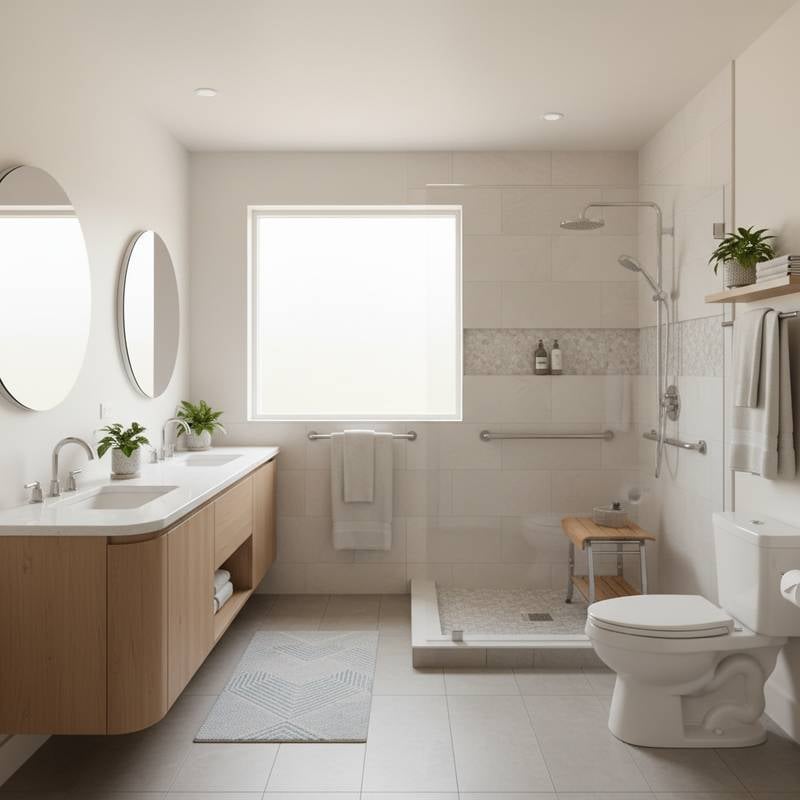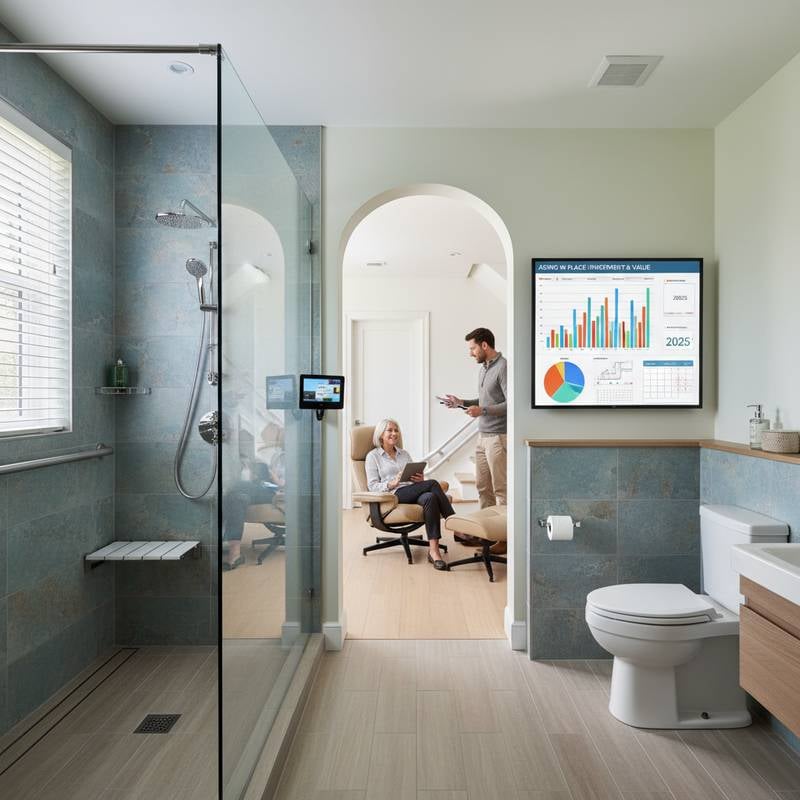Understanding Universal Design for Aging in Place
Universal design principles focus on creating environments that accommodate people of all ages and abilities. These approaches integrate accessibility features seamlessly into everyday spaces, allowing individuals to remain in their homes comfortably as they age. By prioritizing flexibility and ease of use, universal design supports independent living without sacrificing aesthetics or functionality.
Homeowners often overlook the long-term benefits of such modifications until mobility challenges arise. Implementing these changes early prevents costly disruptions later. The result is a residence that evolves with its occupants, promoting safety and convenience over decades.
Key Components of Universal Design Remodels
Universal design remodels typically address multiple areas of the home, starting with entryways and extending to living spaces. Wide doorways, lever handles, and zero-threshold entries eliminate barriers for wheelchair users and those with reduced strength. Flooring choices, such as non-slip surfaces, further enhance stability and reduce fall risks.
Lighting plays a crucial role in visibility and energy efficiency. Motion-sensor lights and layered illumination ensure clear pathways at night. These elements combine to foster an inclusive atmosphere that feels natural rather than institutional.
Cost Breakdown: From $12,000 to $75,000
Basic universal design projects begin around $12,000, covering essential safety upgrades like grab bars, ramp installations, and minor bathroom adjustments. These modifications suit smaller homes or targeted improvements, providing immediate accessibility without extensive overhauls. Labor and materials account for the bulk of this entry-level expense.
Mid-range remodels, priced between $25,000 and $50,000, incorporate kitchen enhancements such as lower countertops and pull-out shelves. Bathroom expansions with walk-in showers and raised toilets fall into this category as well. Factors like home size and location influence the final tally, with urban areas often commanding higher rates due to permit fees.
Comprehensive transformations reach up to $75,000, involving full-home adaptations including stairlifts or elevator installations. Smart home integrations, such as voice-activated controls, add sophistication and convenience. Professional assessments help tailor budgets to specific needs, ensuring value aligns with investment.
Essential Upgrades for Kitchens
Kitchens demand thoughtful modifications to support aging residents. Adjustable-height counters allow standing or seated preparation, accommodating varying mobility levels. Pull-out cabinets and lazy Susans make storage accessible without excessive reaching or bending.
Appliance choices matter significantly. Front-loading washers and dryers eliminate the need for bending, while induction cooktops offer precise control with minimal physical effort. These updates maintain a modern look while prioritizing usability.
Workflow efficiency improves with U-shaped or island layouts that minimize travel distances. Non-slip flooring and ample lighting complete the space, creating an environment where cooking remains enjoyable and safe.
Bathroom Enhancements for Safety and Comfort
Bathrooms present the highest risk for falls, making universal design critical in this area. Curbless showers with built-in benches provide spacious, level entry points. Handheld showerheads and thermostatic valves prevent scalding and enhance independence during bathing.
Toilet upgrades include comfort-height models with integrated grab bars for secure support. Heated floors add warmth and luxury, easing transitions from wet surfaces. Ventilation systems with humidity controls maintain air quality and prevent mold growth.
These features transform bathrooms into sanctuaries of relaxation and reliability. Professional installation ensures compliance with building codes, safeguarding both function and durability.
Strategies to Reduce Remodeling Expenses
Homeowners can lower costs by phasing projects, starting with high-impact areas like bathrooms. Reusing existing fixtures where possible cuts material expenses significantly. Energy-efficient upgrades, such as LED lighting, qualify for rebates that offset initial outlays.
Consulting certified aging-in-place specialists early identifies cost-effective solutions. DIY elements, like painting or simple hardware swaps, suit minor tasks but require caution for structural changes. Comparing contractor bids ensures competitive pricing without compromising quality.
Financing options, including home equity loans or grants for accessibility, ease the financial burden. Planning around tax deductions for medical necessities further maximizes savings.
Return on Investment and Long-Term Value
Universal design investments yield substantial returns through increased home equity and reduced healthcare costs. Properties with accessibility features appeal to broader markets, often selling faster and at higher prices. Resale value appreciates as demographics shift toward older buyers.
Health benefits translate to fewer medical expenses from accidents. Independent living preserves quality of life, delaying the need for assisted care facilities. These factors compound over time, making proactive remodels a wise financial decision.
Insurance premiums may decrease with enhanced safety measures, providing additional savings. Overall, the upfront costs pale in comparison to the enduring advantages of a adaptable home.
Insights from Construction Professionals
Experts emphasize starting with a thorough home evaluation to pinpoint priorities. Certified professionals, like those from the National Association of Home Builders, bring specialized knowledge to complex projects. They recommend durable materials that withstand daily use while blending with existing decor.
Common pitfalls include underestimating electrical needs for smart devices. Professionals advise budgeting 10 to 15 percent extra for unforeseen issues. Collaboration with occupational therapists ensures modifications align with personal habits and future projections.
Sustainability ranks high in modern advice, favoring eco-friendly options that lower utility bills. These insights guide homeowners toward informed choices that balance cost, comfort, and longevity.
Steps to Future-Proof Your Home
Begin by assessing current spaces for potential hazards, using checklists from reliable sources. Engage a designer experienced in universal principles to draft a customized plan. Secure permits and select vetted contractors to execute the vision flawlessly.
Incorporate scalable technology, such as modular furniture and expandable wiring for future devices. Regular maintenance preserves the integrity of upgrades, extending their lifespan. Monitor evolving needs through annual reviews, adjusting as circumstances change.
This proactive approach secures a home that supports wellness at every stage. Families gain peace of mind knowing their space adapts seamlessly to life's transitions.











